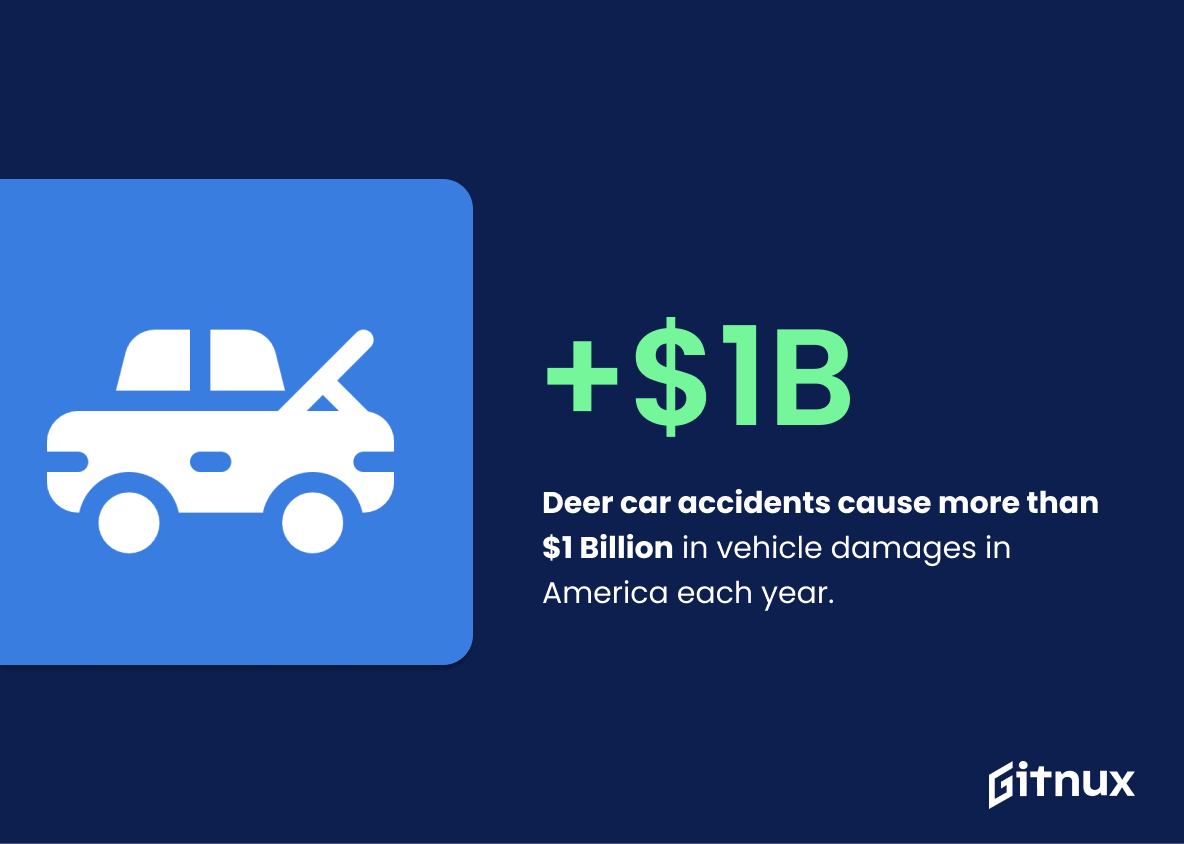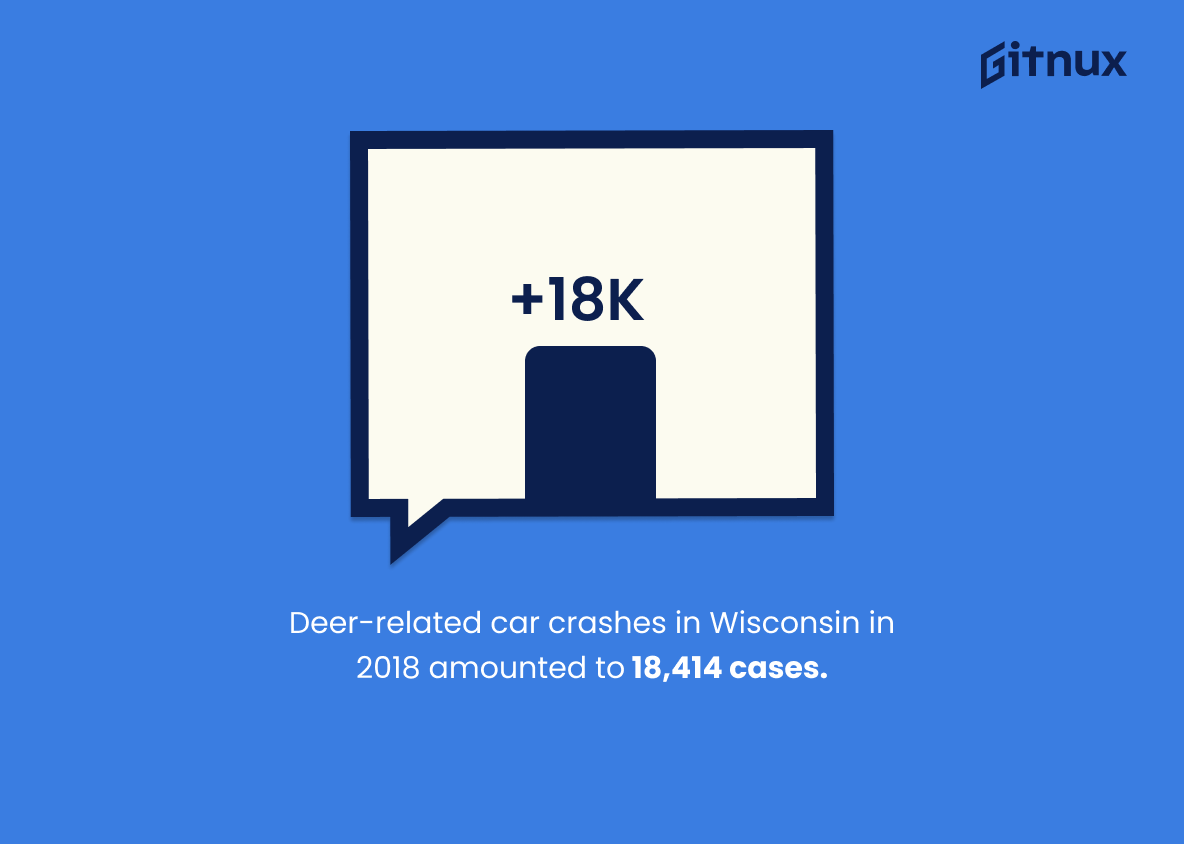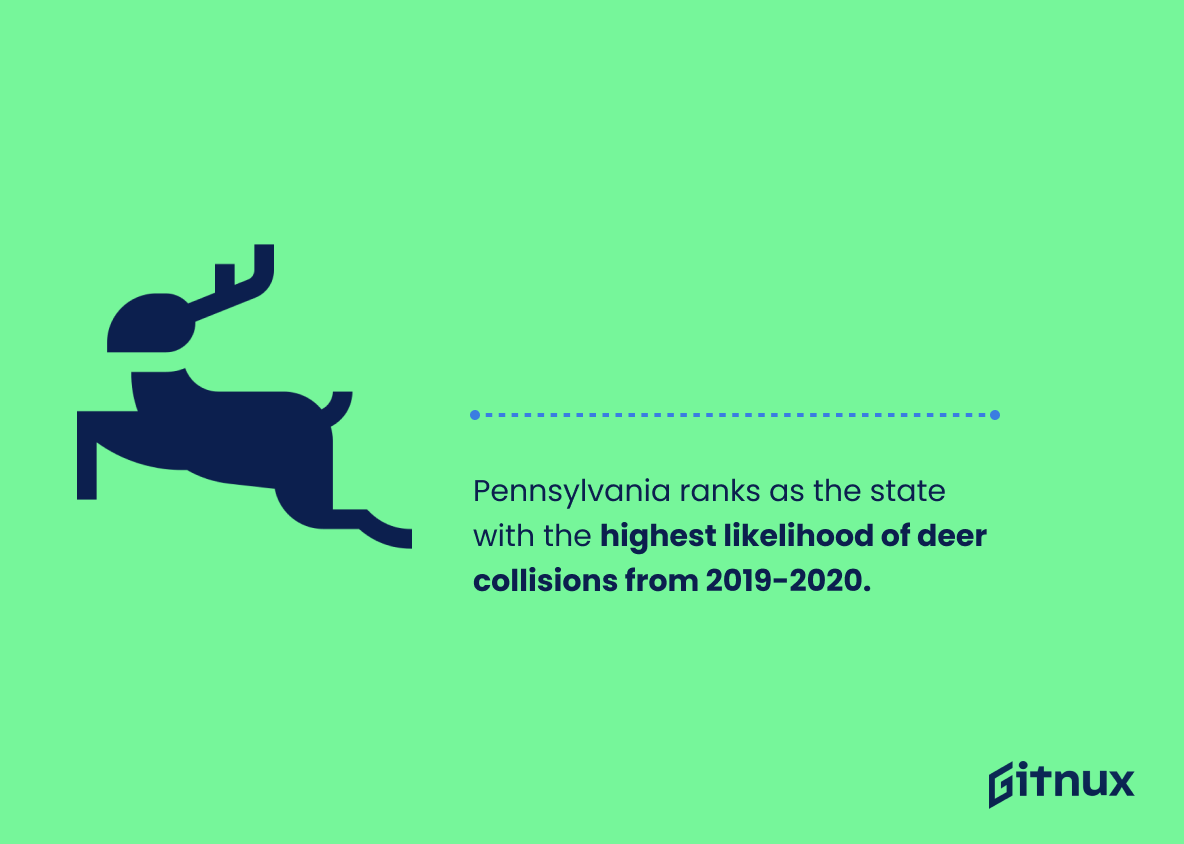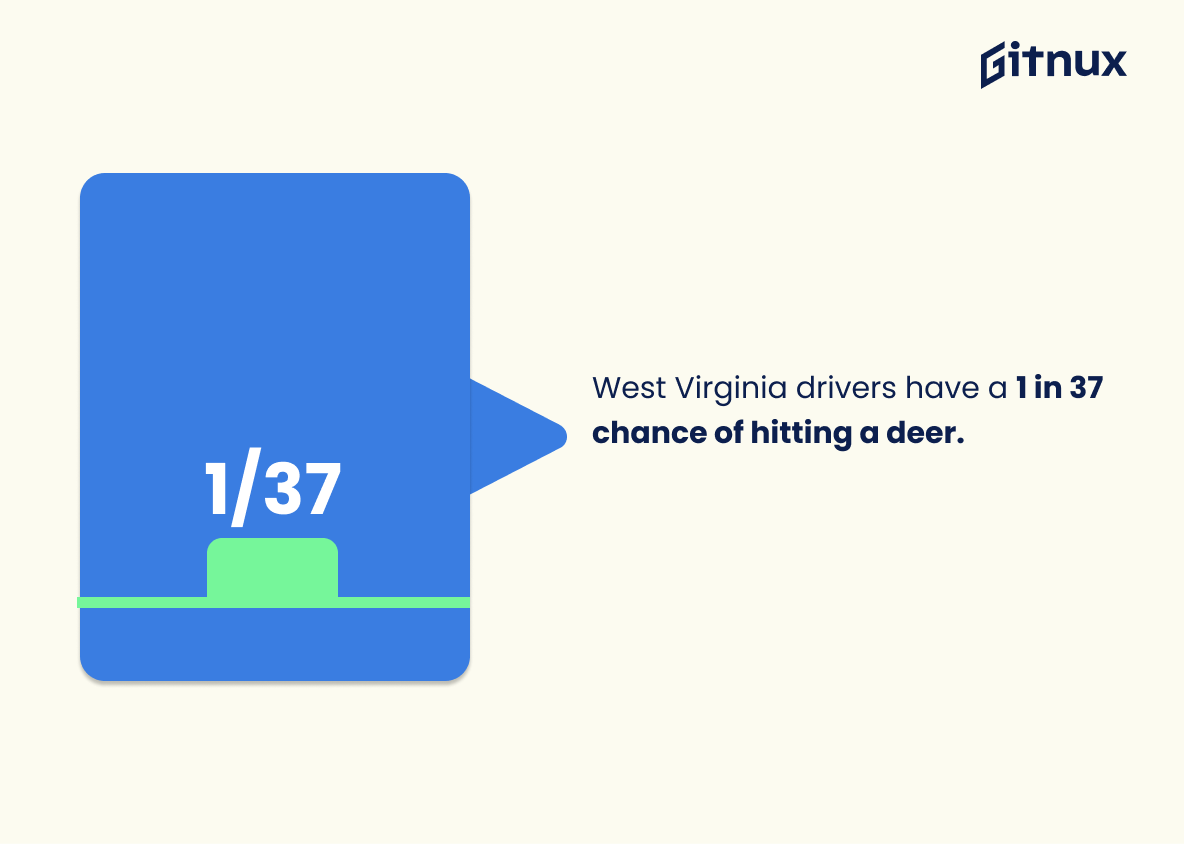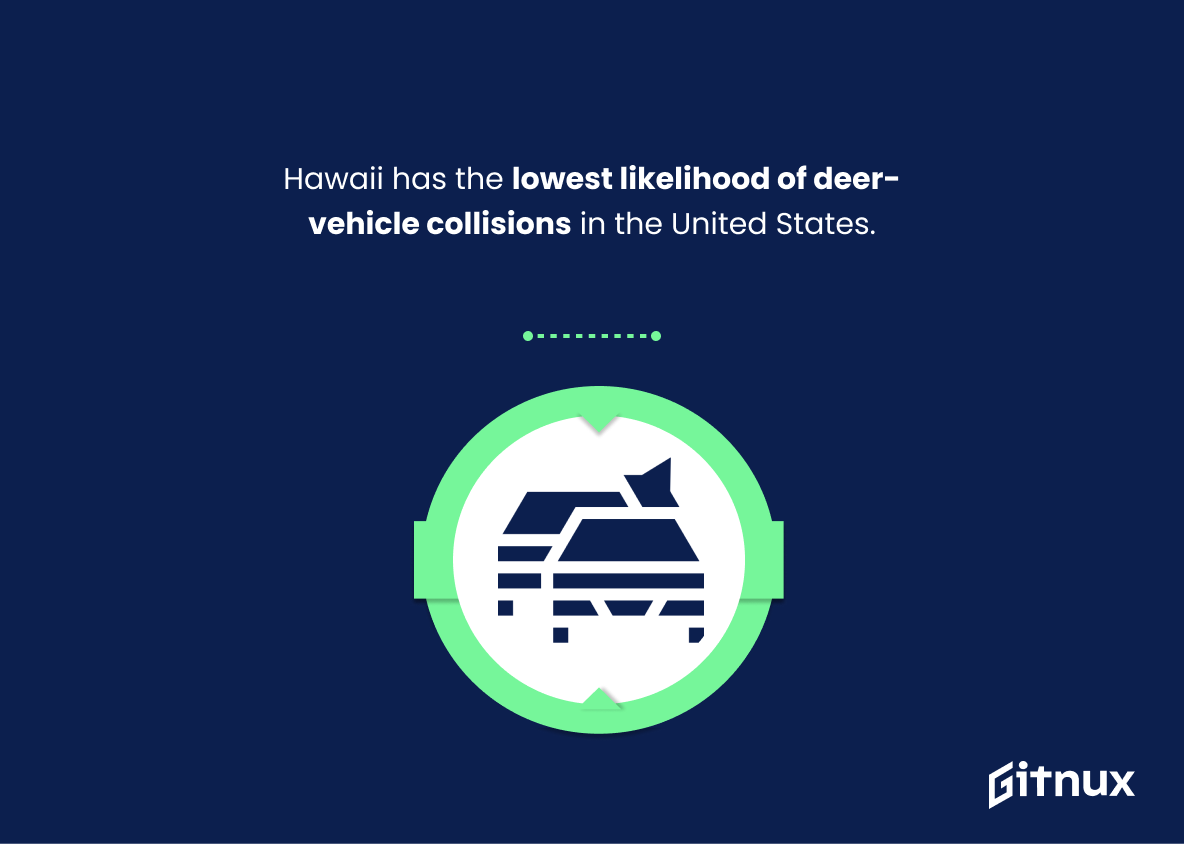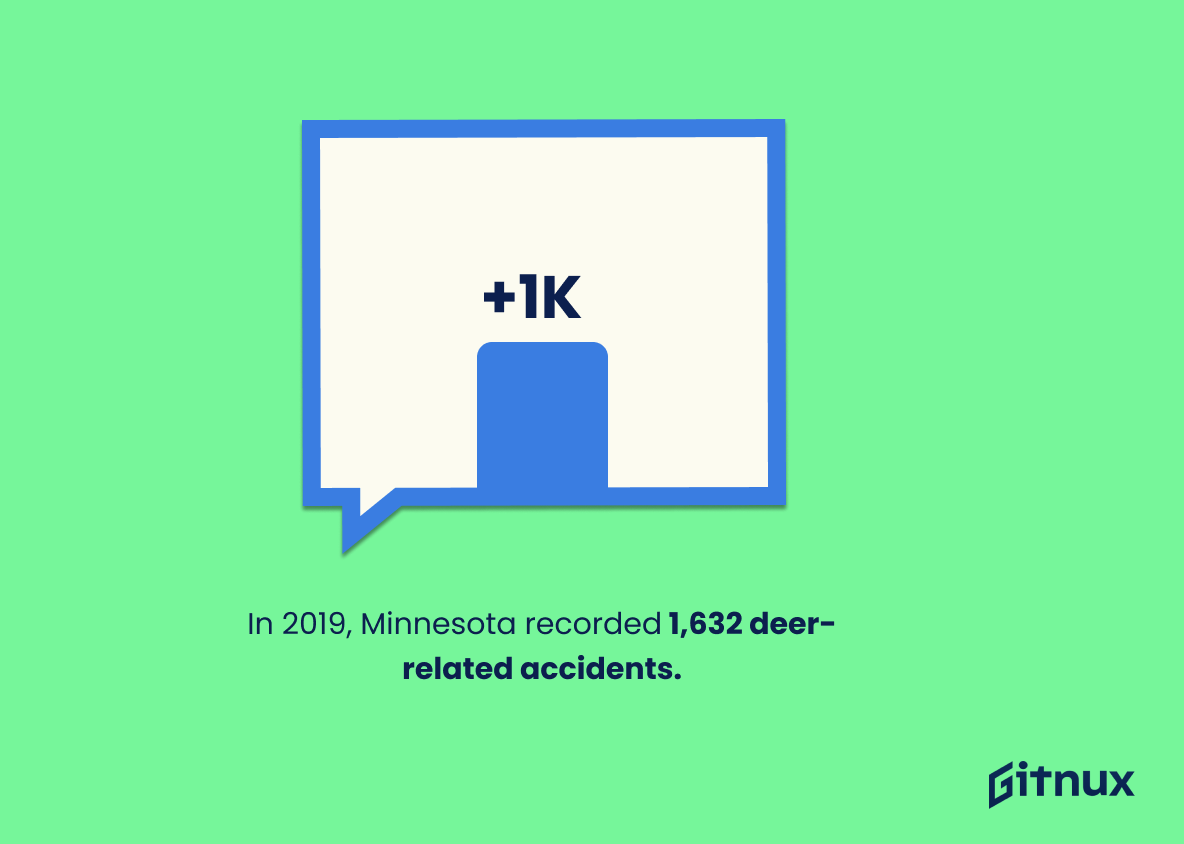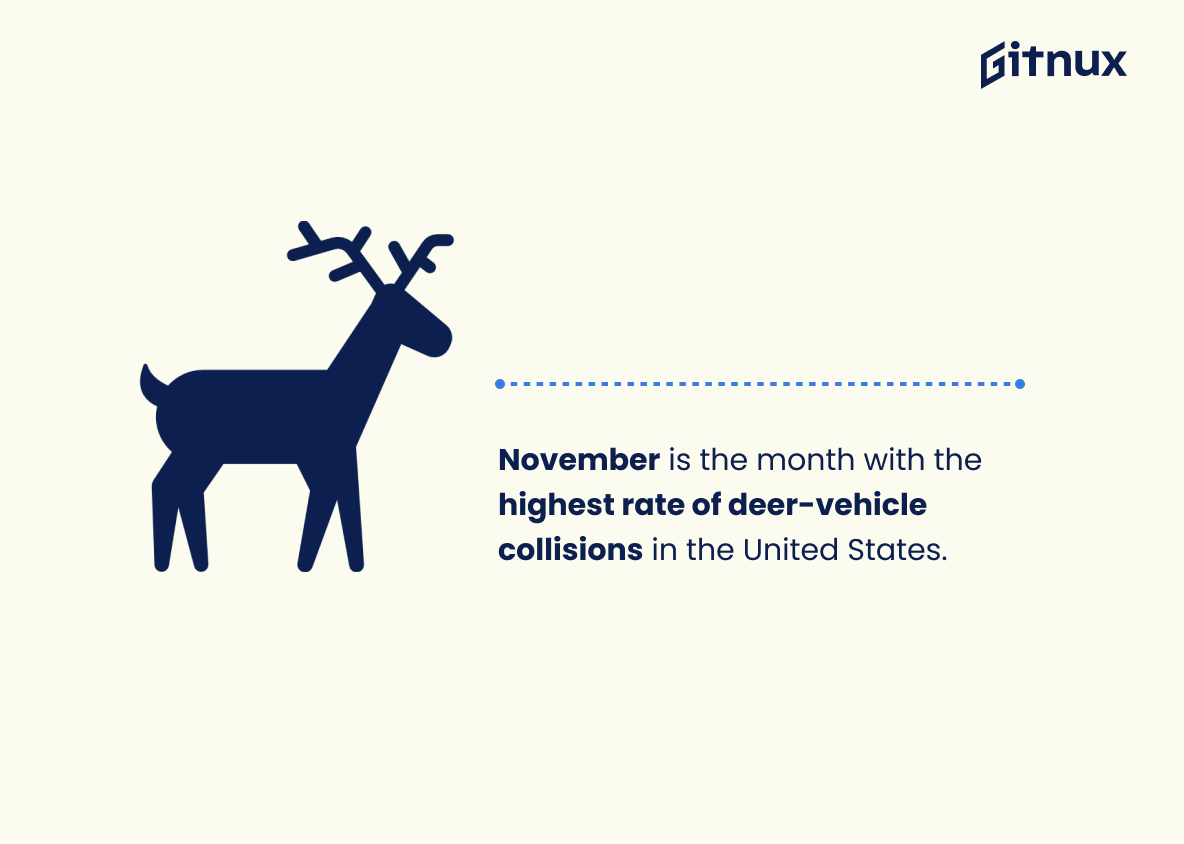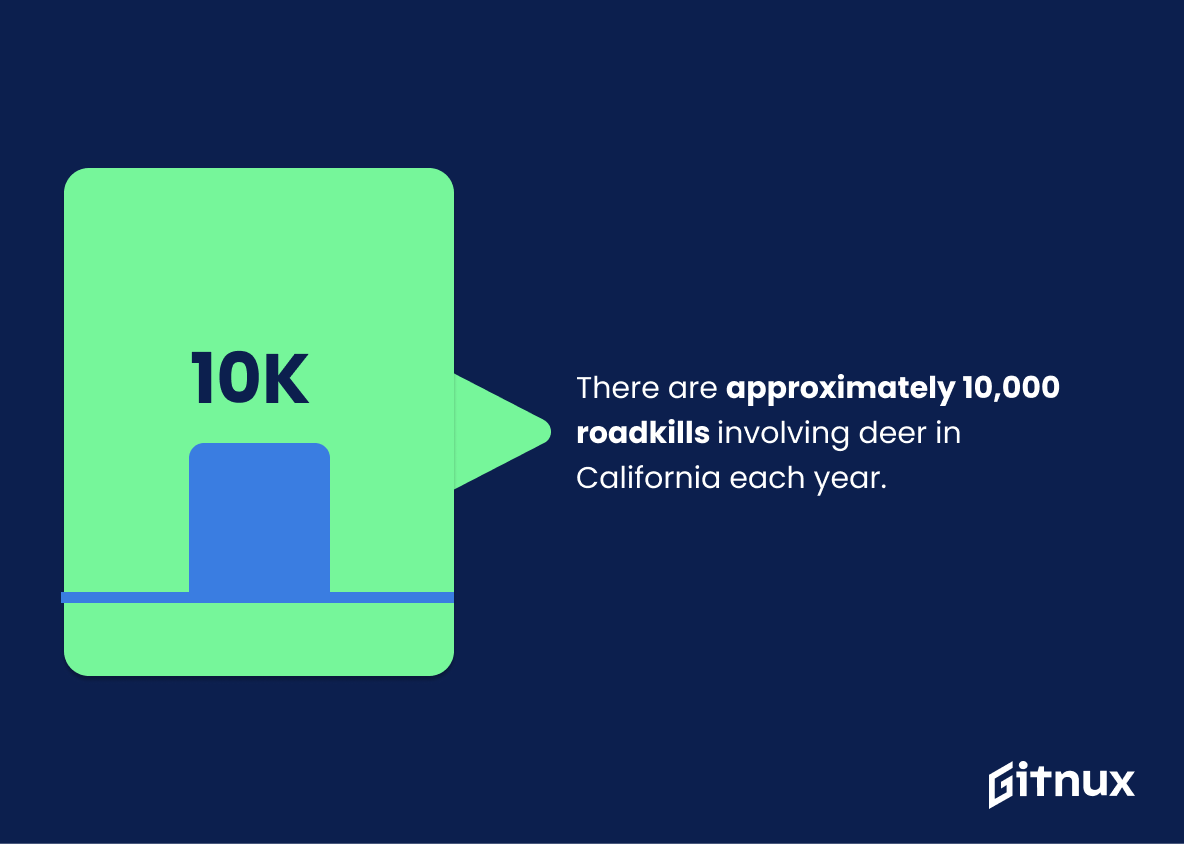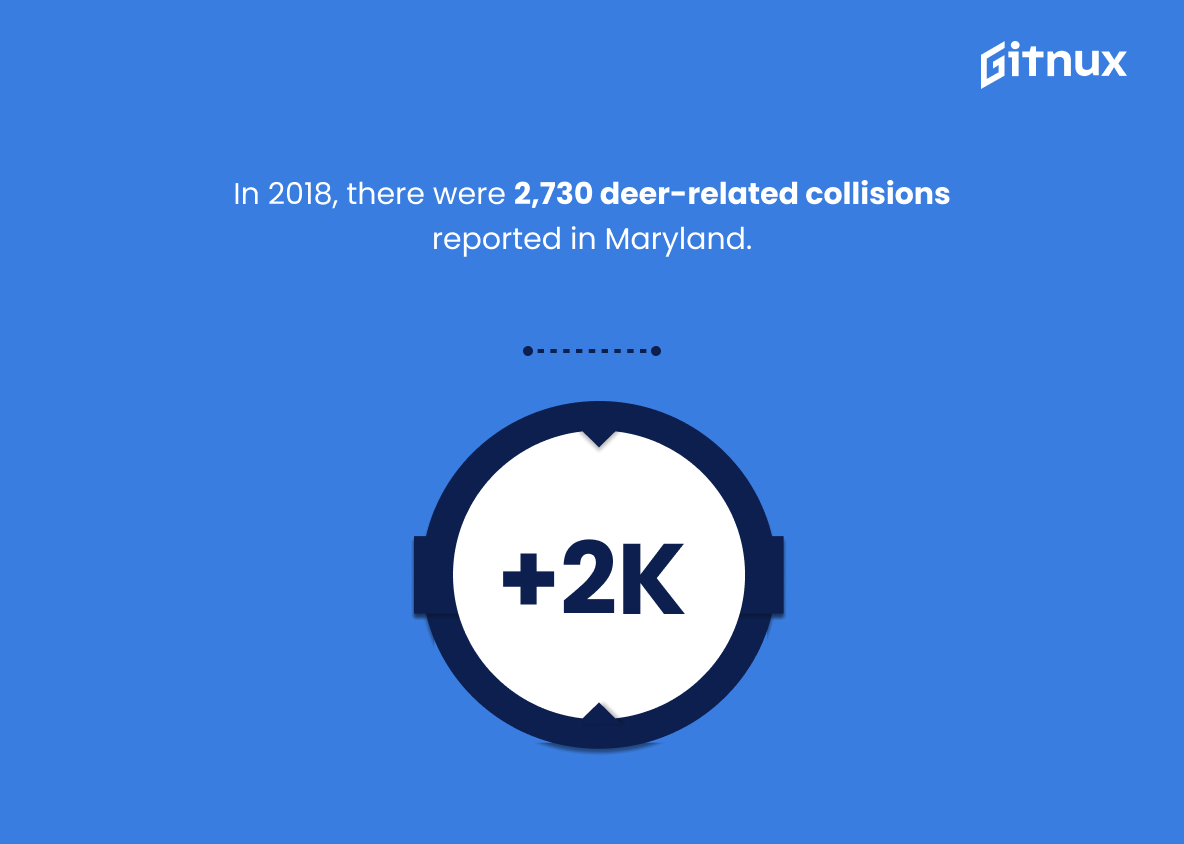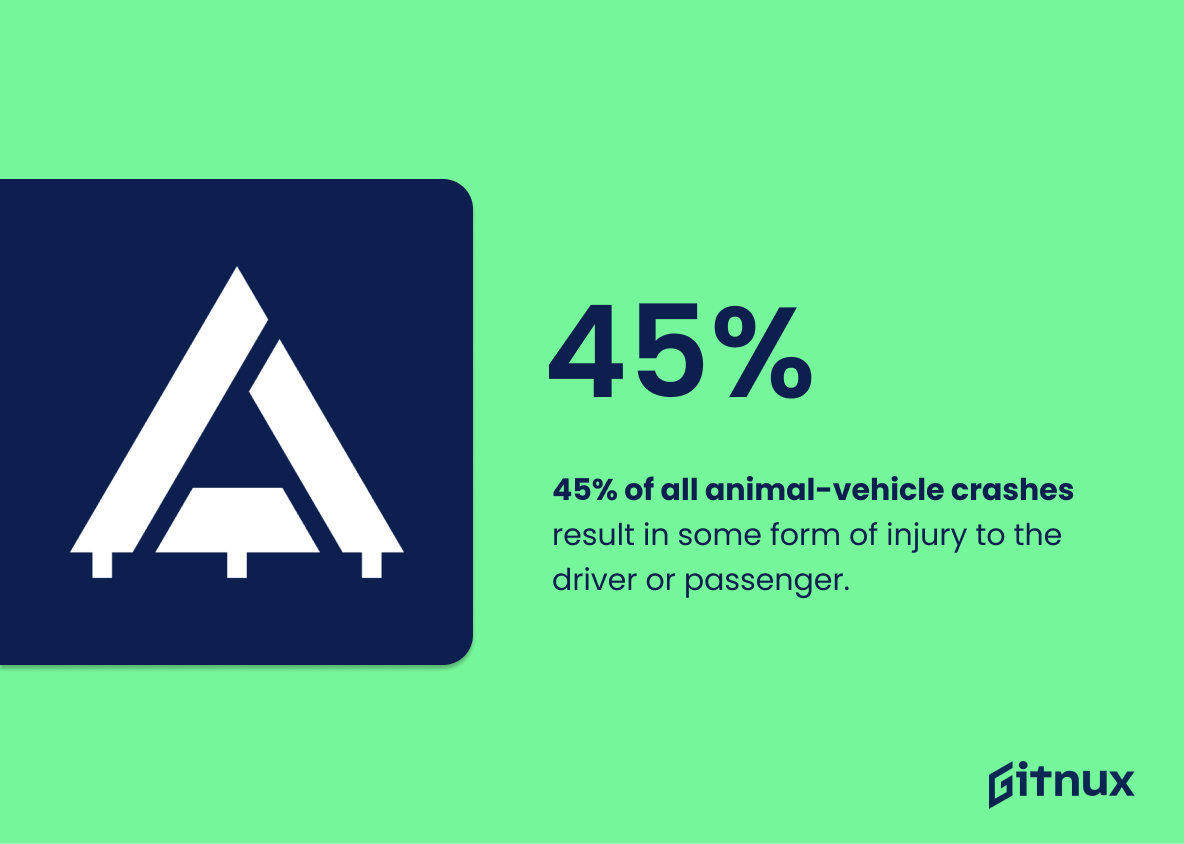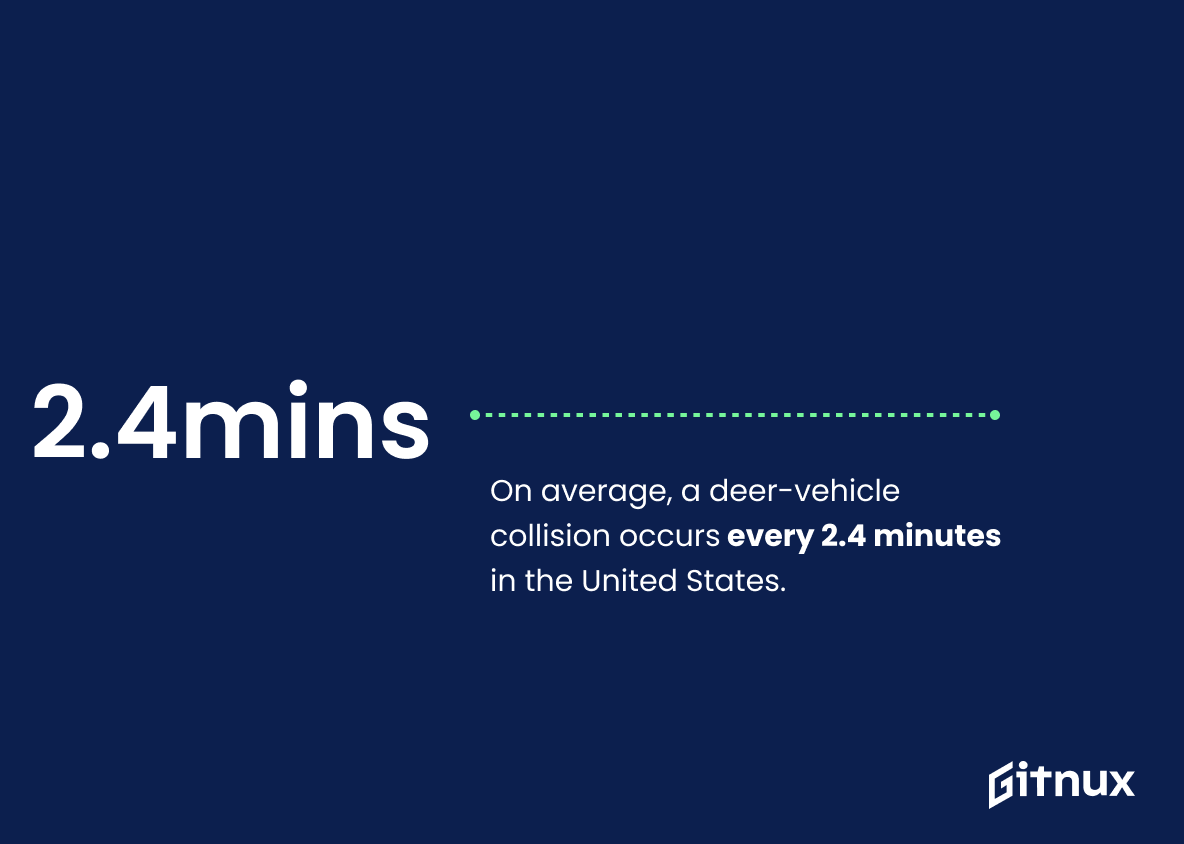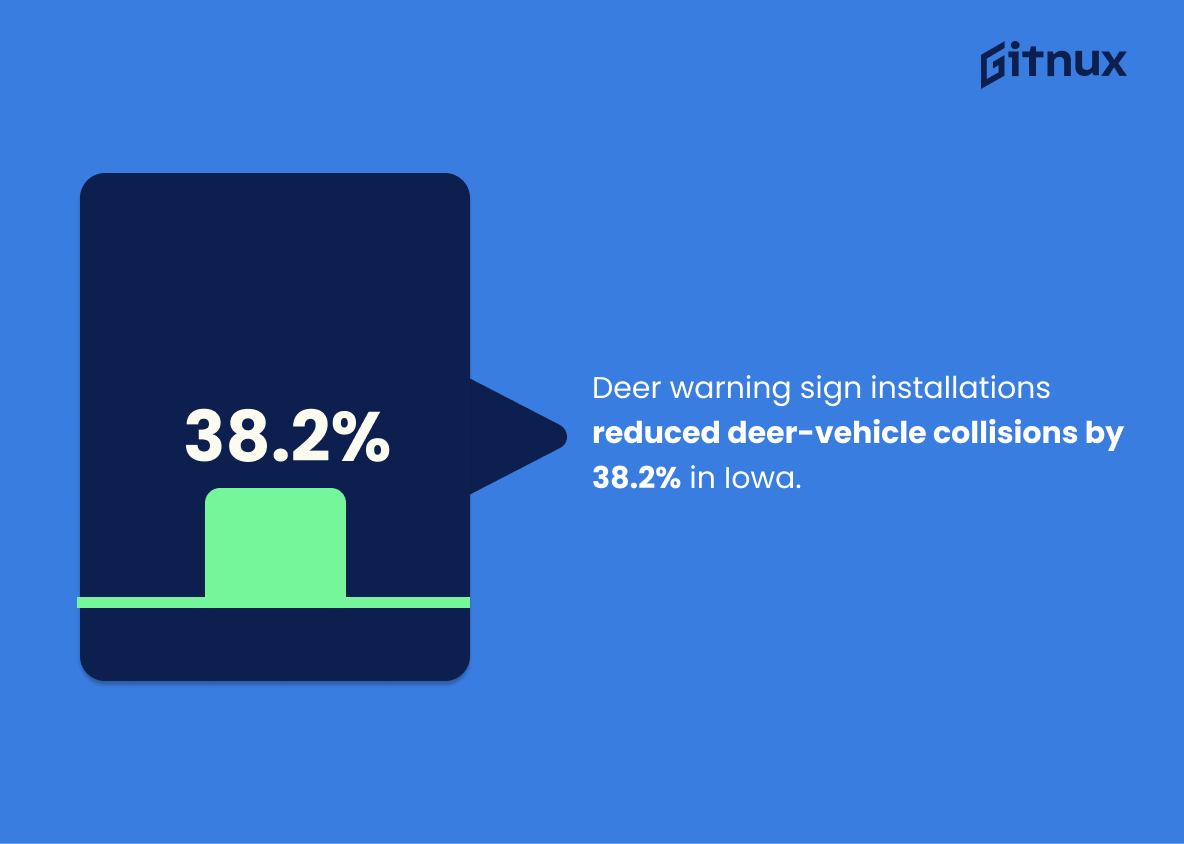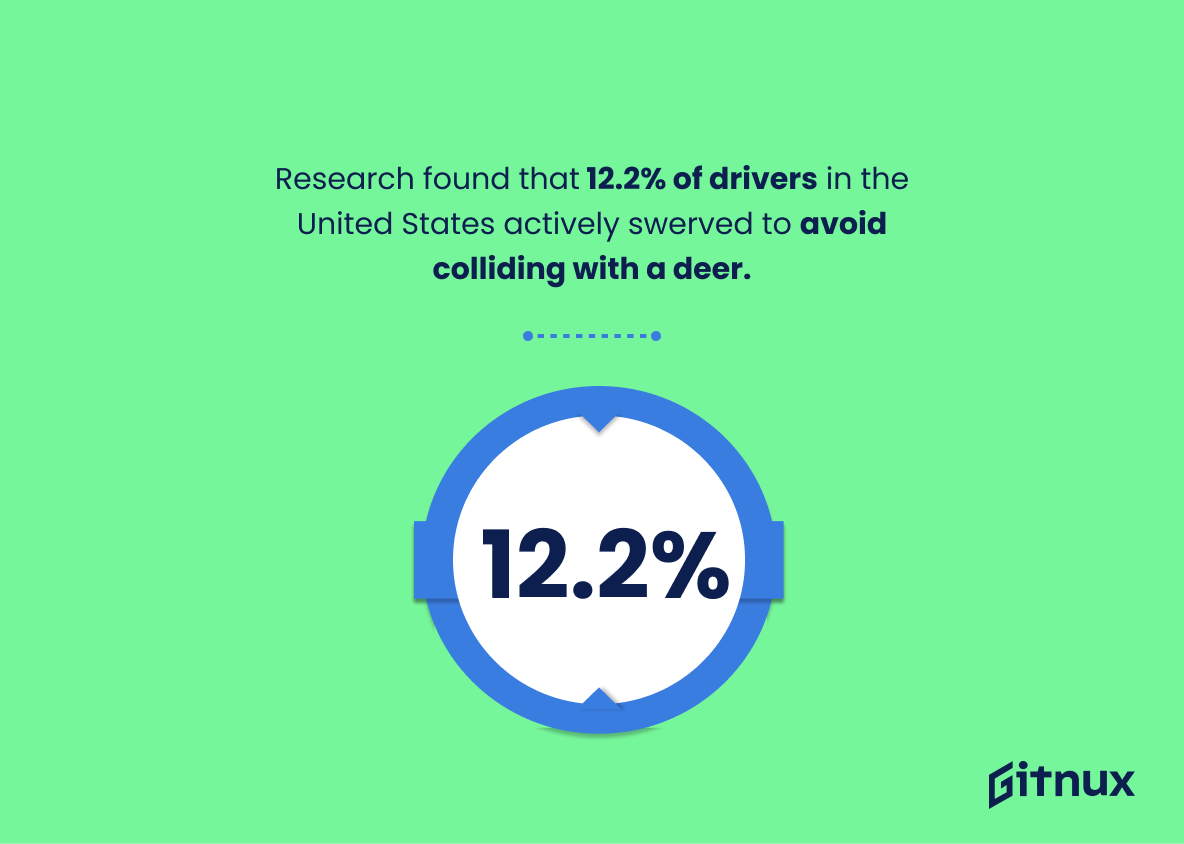Deer-vehicle collisions are a serious problem in the United States, with approximately 1.5 million such accidents occurring each year and causing about 200 human fatalities annually. These crashes also cause more than $1 billion in vehicle damages every year across America, making them an expensive issue to address.
The state of Wisconsin reported 18,414 deer car accident cases in 2018 alone while Pennsylvania ranks as the state with the highest likelihood of deer collisions from 2019-2020 according to insurance data. West Virginia drivers have a one in 37 chance of hitting a deer on their roads while Hawaii has been found to be at lowest risk for these types of incidents nationwide.
In Iowa there has been an increase by 33% over the last decade when it comes to deer related car accidents and research shows that November is typically when most occur throughout all states due to mating season activity among other factors like hunting season or migration patterns during this time period too. The UK experiences 50% more roadkills involving deers between October and November compared with other months whereas Minnesota recorded 1632 similar cases back in 2019 which was lower than previous years but still significant enough for concern nonetheless .
California sees around 10 000 roadkills involving deers yearly meanwhile 45 percent out of all animal-vehicle crashes result into some form injury towards either driver or passenger involved regardless if its caused by collision with wild animals like moose , elks or even smaller ones like raccoons etc.. Michigan experienced 50 949 reported car -deer crash incidents just within 2020 itself whilst New York City had 1268 motor accidents linked directly towards those same type creatures only two years prior where Staten Island accounted for 235 individual occurrences out off total number mentioned above .
Finally , installing warning signs near areas known for high concentration levels regarding wildlife can help reduce chances significantly since studies conducted inside Iowa showed 38 2 % decrease after implementation took place so far . On average though , US citizens face danger posed by potential collision every 2 4 minutes although majority ( 90 % ) take place along two lane roads instead rather then highways themselves yet swerving away remains popular choice amongst many drivers despite being dangerous maneuver overall speaking ..
Deer Car Accidents Statistics Overview
Deer car accidents cause more than $1 Billion in vehicle damages in America each year.
This statistic is a stark reminder of the costly consequences of deer car accidents in America. It highlights the need for drivers to be extra vigilant when driving in areas where deer are present, as the financial burden of these accidents can be immense.
Deer-related car crashes in Wisconsin in 2018 amounted to 18,414 cases.
This statistic is a stark reminder of the dangers of deer-related car crashes in Wisconsin in 2018. It serves as a powerful illustration of the magnitude of the problem and the need for drivers to be extra vigilant when driving in deer-populated areas.
Pennsylvania ranks as the state with the highest likelihood of deer collisions from 2019-2020.
The fact that Pennsylvania ranks as the state with the highest likelihood of deer collisions from 2019-2020 is a stark reminder of the dangers of deer-car collisions. It is a wake-up call to drivers in the state to be extra vigilant when driving, especially during the fall and winter months when deer are more active.
West Virginia drivers have a 1 in 37 chance of hitting a deer.
The statistic that West Virginia drivers have a 1 in 37 chance of hitting a deer is a stark reminder of the potential danger of deer car accidents. It serves as a warning to drivers in the area to be extra vigilant when driving, as the odds of a collision are higher than in other states.
Hawaii has the lowest likelihood of deer-vehicle collisions in the United States.
The fact that Hawaii has the lowest likelihood of deer-vehicle collisions in the United States is a testament to the state’s commitment to safety. It serves as a reminder that with the right precautions and strategies, the risk of deer-vehicle collisions can be minimized. This statistic is a shining example of how proactive measures can lead to a safer driving environment.
The number of deer collisions in the UK increases by 50% in October and November.
This statistic is a stark reminder of the dangers of deer car accidents in the UK during the months of October and November. It highlights the need for drivers to be extra vigilant during these months, as the risk of a collision with a deer is significantly higher. This is an important statistic to consider when discussing deer car accident statistics, as it serves as a warning to drivers to be aware of the increased risk of a collision during these months.
In 2019, Minnesota recorded 1,632 deer-related accidents.
This statistic serves as a stark reminder of the dangers of deer-related accidents in Minnesota. It highlights the need for drivers to be aware of their surroundings and to take extra precautions when driving in areas where deer may be present. It also serves as a call to action for state and local governments to take steps to reduce the number of deer-related accidents in the state.
November is the month with the highest rate of deer-vehicle collisions in the United States.
The fact that November is the month with the highest rate of deer-vehicle collisions in the United States is a stark reminder of the dangers of driving during this time of year. With the onset of colder weather, deer are more active and are more likely to cross roads, increasing the risk of a collision. This makes it all the more important for drivers to be aware of their surroundings and take extra precautions when driving during this time of year.
There are approximately 10,000 roadkills involving deer in California each year.
This statistic serves as a stark reminder of the dangers posed by deer-vehicle collisions in California. It highlights the need for drivers to be extra vigilant when driving in areas where deer are known to roam, as the potential for a deadly accident is very real. Furthermore, it serves as a call to action for local authorities to take steps to reduce the number of roadkills involving deer, such as installing fencing or warning signs in areas where deer are known to cross.
In 2018, there were 2,730 deer-related collisions reported in Maryland.
This statistic serves as a stark reminder of the dangers of deer-related collisions in Maryland. It highlights the prevalence of these accidents and the need for drivers to be aware of the risks and take necessary precautions.
45% of all animal-vehicle crashes result in some form of injury to the driver or passenger.
This statistic is a stark reminder of the potential danger posed by deer-vehicle collisions. It highlights the fact that, even if the animal is not killed, the driver and passengers of the vehicle can still suffer serious injury. This is a sobering reminder of the importance of taking extra precautions when driving in areas where deer are known to be present.
Michigan experienced 50,949 reported car-deer crashes in 2020.
The fact that Michigan experienced 50,949 reported car-deer crashes in 2020 is a stark reminder of the dangers of deer-vehicle collisions. This figure serves as a warning to drivers to be extra vigilant when driving in areas where deer are known to roam. It also highlights the need for drivers to take extra precautions to avoid such accidents, such as driving at a safe speed and being aware of their surroundings.
On average, a deer-vehicle collision occurs every 2.4 minutes in the United States.
This statistic serves as a stark reminder of the prevalence of deer-vehicle collisions in the United States. With one occurring every 2.4 minutes, it is clear that these accidents are a major issue that needs to be addressed.
Deer warning sign installations reduced deer-vehicle collisions by 38.2% in Iowa.
This statistic is a powerful testament to the effectiveness of deer warning sign installations in Iowa. It demonstrates that these signs can have a significant impact on reducing the number of deer-vehicle collisions, making roads safer for drivers and protecting the deer population.
Research found that 12.2% of drivers in the United States actively swerved to avoid colliding with a deer.
This statistic is a powerful indicator of the prevalence of deer-related car accidents in the United States. It shows that even with drivers actively trying to avoid them, a significant portion of drivers still end up in collisions with deer. This highlights the importance of being aware of deer on the roads and taking the necessary precautions to avoid them.
In 2016, there were 1,268 deer-related motor accidents in New York City with 235 incidents in Staten Island.
This statistic is a stark reminder of the dangers of deer-related motor accidents in New York City, particularly in Staten Island. It highlights the need for drivers to be extra vigilant when driving in areas where deer are known to be present, as the number of accidents in 2016 alone is a testament to the potential risks.
Conclusion
The statistics presented in this blog post demonstrate the prevalence of deer-vehicle collisions across the United States. Approximately 1.5 million such accidents occur each year, resulting in 200 human fatalities and more than $1 billion worth of vehicle damages annually. The likelihood of a collision varies from state to state; Pennsylvania ranks as having the highest risk while Hawaii has the lowest risk for drivers.
Additionally, November is typically when these incidents are most likely to happen due to mating season and migration patterns among deer populations during that time period. Drivers should be aware of their surroundings at all times and take extra caution on two-lane roads where over 90% of these collisions occur – especially during peak months like October or November – by slowing down, scanning ahead for wildlife activity, using high beams when possible, avoiding swerving if an animal appears suddenly in front them and being prepared with emergency supplies just in case they do get into an accident involving a deer or other wild animal crossing their path.
References
0. – https://www.duluthnewstribune.com
1. – https://www.nbcbayarea.com
2. – https://www.rosap.ntl.bts.gov
3. – https://www.deeranddeerhunting.com
4. – https://www.middletownpress.com
5. – https://www.automoblog.net
6. – https://www.rac.co.uk
7. – https://www.burlingtonfreepress.com
8. – https://www.researchgate.net
9. – https://www..nyc.gov
10. – https://www.insurancejournal.com
11. – https://www.iii.org
12. – https://www.wisconsindot.gov
13. – https://www.carinsurance.org
14. – https://www.michigan.gov
15. – https://www.caranddriver.com
16. – https://www.patch.com
